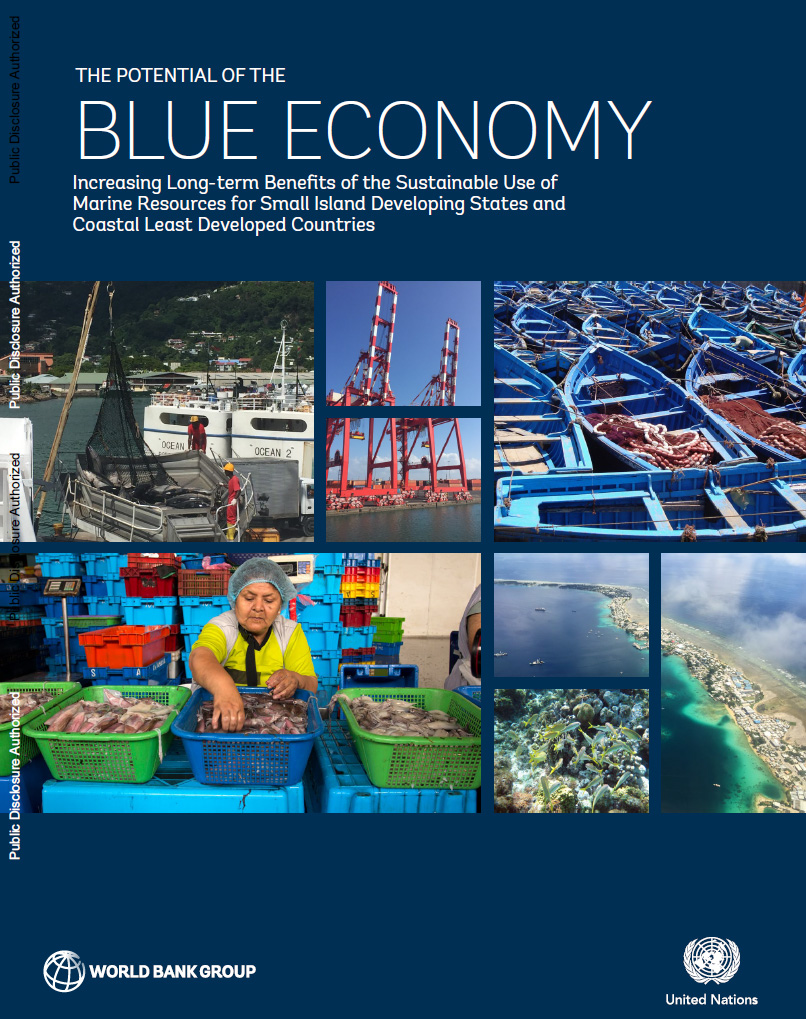Building Resilience In Least Developed Countries: A Pathway To Sustainable Transformation

Table of Contents
Strengthening Institutional Capacity & Governance
Effective governance and strong institutions are the bedrock of resilience. Without robust systems of accountability and transparency, LDCs remain susceptible to mismanagement, corruption, and ineffective responses to crises.
Good Governance and Transparency:
- Examples of good governance initiatives: Implementing open government data initiatives, strengthening independent auditing mechanisms, and promoting citizen participation in decision-making processes. The establishment of independent anti-corruption bodies is crucial.
- Impact of corruption on resilience: Corruption diverts resources away from essential services, undermines public trust, and hinders effective disaster response. It exacerbates inequalities and weakens the ability of governments to effectively implement policies aimed at building resilience.
- Strategies for enhancing transparency: Promoting open budget initiatives, strengthening freedom of information laws, and supporting independent media. International partnerships focused on anti-corruption are also vital.
Investing in Human Capital:
Human capital is the engine of sustainable development. Investing in education, healthcare, and skills development equips individuals and communities with the tools they need to navigate challenges and build a more resilient future.
- Examples of successful human capital development programs: Conditional cash transfer programs linked to school attendance, vocational training initiatives focusing on skills relevant to local economies, and investments in primary healthcare, including disease prevention and maternal health.
- Link between health and economic productivity: Healthy populations are more productive and contribute significantly to economic growth. Investing in healthcare translates to long-term economic benefits.
- Role of education in adaptation: Education empowers individuals to understand and adapt to climate change impacts, fostering innovation and sustainable practices.
Diversifying Economies & Promoting Sustainable Growth
Over-reliance on vulnerable sectors, such as rain-fed agriculture highly susceptible to climate change, leaves LDCs exposed to economic shocks. Diversification and inclusive growth are crucial for building economic resilience.
Reducing Economic Dependence:
- Promoting diversification: Investing in manufacturing, technology, and sustainable tourism can create new economic opportunities and reduce vulnerability to climate shocks and price fluctuations in primary commodity markets. Sustainable agriculture practices focusing on diversification and climate-resilient crops is also critical.
- Attracting foreign investment: Creating a favorable investment climate, including streamlined regulations and transparent governance, is key to attracting foreign investment and fostering economic growth. This can help to build capacity and diversify the economy.
- Alignment with SDGs: Economic diversification strategies should align with the Sustainable Development Goals (SDGs) to ensure sustainable and equitable growth.
Fostering Inclusive Growth:
- Promoting entrepreneurship: Supporting small and medium-sized enterprises (SMEs) through access to finance, training, and mentorship programs is essential for creating jobs and fostering economic dynamism.
- Addressing gender inequality: Empowering women economically through access to education, finance, and land ownership contributes significantly to reducing poverty and building more resilient communities.
- Ensuring access to finance: Expanding access to microfinance and other financial services allows vulnerable populations to invest in their businesses and livelihoods.
Enhancing Climate Change Adaptation & Disaster Risk Reduction
Climate change poses an existential threat to LDCs. Investing in climate-resilient infrastructure and building community resilience are paramount.
Climate-Resilient Infrastructure:
- Investing in early warning systems: Developing reliable early warning systems for extreme weather events is crucial for saving lives and reducing economic losses.
- Building climate-resilient housing and transportation: Constructing infrastructure that can withstand the impacts of climate change, such as floods and droughts, is essential.
- Promoting sustainable water management: Investing in water harvesting, irrigation systems, and water conservation techniques helps to mitigate the impact of droughts and water scarcity.
Building Community Resilience:
- Community-based disaster risk reduction (CBDRR) initiatives: Empowering communities to participate actively in disaster preparedness and response is essential. This includes training, community-based early warning systems, and disaster preparedness plans developed in consultation with affected communities.
- Promoting community participation: Engaging communities in planning and decision-making strengthens social capital and improves the effectiveness of resilience-building efforts.
- Fostering social cohesion: Strong social networks and community bonds help to build resilience by providing mutual support during crises.
Leveraging Technology & Innovation
Technology and innovation offer powerful tools for building resilience in LDCs.
Harnessing Digital Technologies:
- Use of mobile technology for information dissemination: Mobile phones can be used to disseminate early warnings, agricultural advice, and health information to remote communities.
- Promoting digital literacy: Improving digital literacy skills empowers individuals to access and utilize information and technology effectively.
- Using technology for climate monitoring and early warning systems: Remote sensing, satellite imagery, and other technologies can be used to monitor weather patterns and provide timely warnings.
Promoting Local Innovation:
- Funding local research and development: Investing in research and development relevant to local contexts helps to develop sustainable solutions tailored to the specific needs of LDCs.
- Fostering entrepreneurship: Supporting local entrepreneurs who develop innovative solutions can drive economic growth and build resilience.
- Promoting technology transfer: Facilitating the transfer of appropriate technologies from developed countries to LDCs helps to build capacity and promote innovation.
Conclusion
Building resilience in Least Developed Countries requires a multifaceted approach that encompasses strengthening institutions, diversifying economies, enhancing climate change adaptation, and leveraging technology and innovation. By investing in good governance, human capital, climate-resilient infrastructure, and local innovation, we can empower LDCs to withstand shocks and stresses and achieve sustainable transformation. By actively participating in and supporting initiatives focused on building resilience in least developed countries, we can collectively pave the way for a more sustainable and equitable future. Let's prioritize building resilience in these vulnerable nations and help them thrive.

Featured Posts
-
 Paige Bueckers Wnba Debut 10 Points In Loss To Aces
May 07, 2025
Paige Bueckers Wnba Debut 10 Points In Loss To Aces
May 07, 2025 -
 Where To Watch The April 11th Warriors Vs Trail Blazers Game
May 07, 2025
Where To Watch The April 11th Warriors Vs Trail Blazers Game
May 07, 2025 -
 Catls 1 Billion Indonesia Expansion A Loan For Growth
May 07, 2025
Catls 1 Billion Indonesia Expansion A Loan For Growth
May 07, 2025 -
 Mdhkrt Tfahm Jdydt Lrbt Afryqya Walsyn Jwya Ebr Laram Wkhtwt Jnwb Alsyn Aljwyt
May 07, 2025
Mdhkrt Tfahm Jdydt Lrbt Afryqya Walsyn Jwya Ebr Laram Wkhtwt Jnwb Alsyn Aljwyt
May 07, 2025 -
 70
May 07, 2025
70
May 07, 2025
